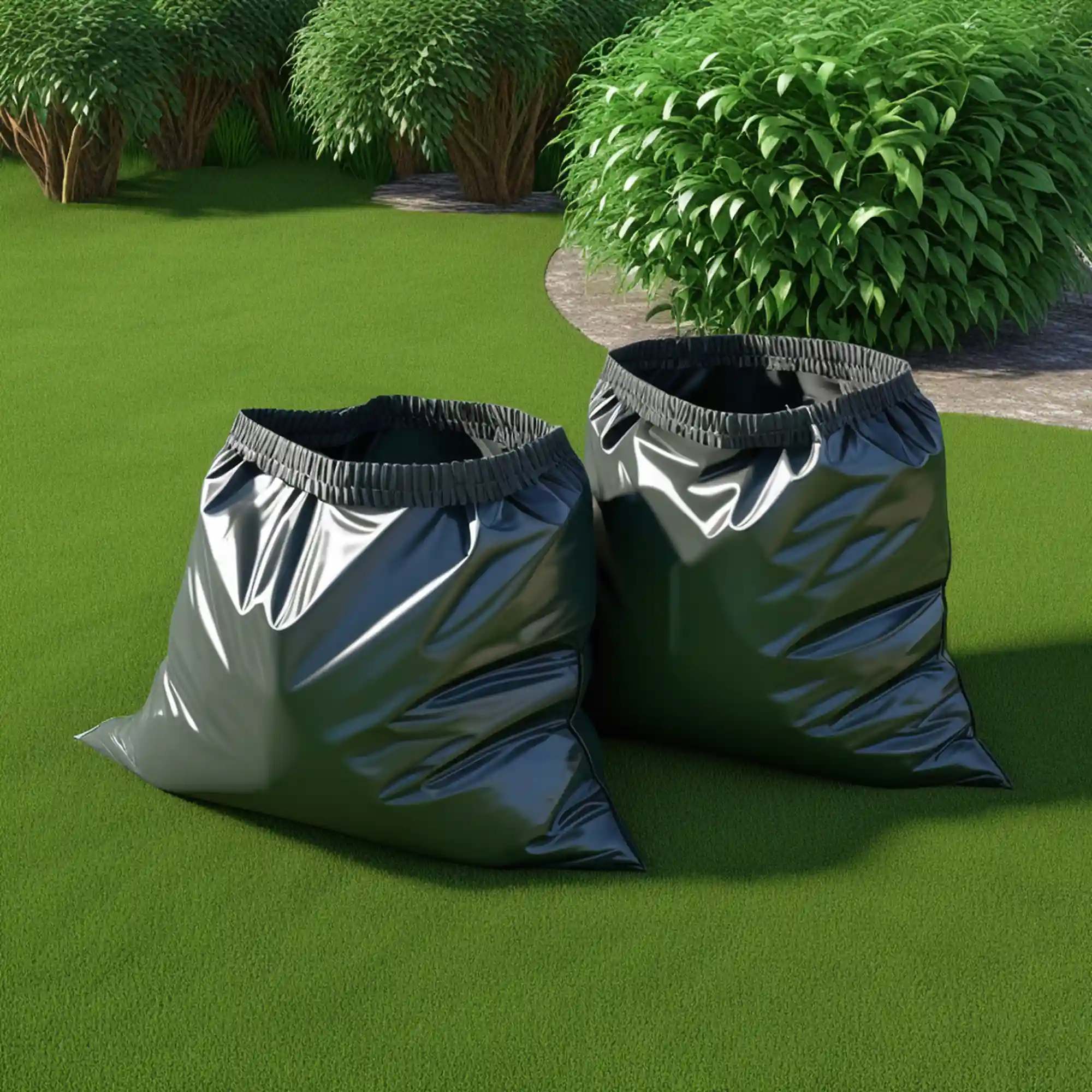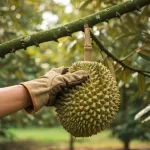Are you tired of dealing with yard waste and debris cluttering up your lawn? Do you struggle to find the right bags to collect and dispose of leaves, branches, and other unwanted materials? You’re not alone. Many homeowners and gardeners face the same problem, but the solution is simpler than you think. By using the right debris and lawn bags, you can efficiently collect and dispose of yard waste, saving you time and effort. In this comprehensive guide, we’ll explore everything you need to know about debris and lawn bags, from understanding their importance to choosing the right ones for your yard.
Understanding Debris & Lawn Bags
What are Debris & Lawn Bags?
Debris and lawn bags are specialized bags designed to collect and contain yard waste, such as leaves, branches, grass clippings, and other organic materials. They come in various sizes, materials, and types, each suited for specific yard cleanup tasks. These bags are an essential tool for homeowners, gardeners, and landscapers who want to maintain a clean and tidy lawn.
Types of Debris & Lawn Bags
There are several types of debris and lawn bags available, each with its own unique features and benefits.
| Type | Description | Benefits |
| Biodegradable | Made from natural materials that break down easily | Environmentally friendly, compostable |
| Compostable | Made from materials that can be composted | Reduces waste, creates nutrient-rich soil |
| Reusable | Durable bags that can be used multiple times | Cost-effective, reduces waste |
| Heavy-Duty | Thick, sturdy bags for heavy yard waste | Durable, long-lasting, and reliable |
Benefits of Using Debris & Lawn Bags
Using debris and lawn bags offers several benefits, including:
- Saves time and effort: Collecting and disposing of yard waste is faster and easier with the right bags.
- Reduces waste and mess: Debris and lawn bags keep your yard clean and tidy, reducing the risk of mess and waste.
- Easy to use and dispose of: These bags are designed for easy use and disposal, making yard cleanup a breeze.
Choosing the Right Debris & Lawn Bags
Factors to Consider When Choosing Debris & Lawn Bags
When selecting debris and lawn bags, there are several factors to consider to ensure you get the right ones for your yard cleanup needs.
- Size and capacity: Choose bags that are the right size for your yard waste. Consider the volume of waste you need to collect and the space you have available for storage.
- Material and durability: Select bags made from durable materials that can withstand the weight and type of yard waste you need to collect.
- Handles and tie systems: Look for bags with sturdy handles and secure tie systems to make it easy to carry and dispose of the bags.
- Brand and price: Consider the reputation of the brand and the price of the bags. While cheaper bags may seem like a good option, they may not be as durable or effective in the long run.
How to Select the Right Size Debris & Lawn Bag for Your Yard
To select the right size debris and lawn bag for your yard, follow these steps:
- Measure your yard waste: Measure the volume of yard waste you need to collect to determine the right size bag.
- Calculate the right bag size: Use the following formula to calculate the right bag size: (Length x Width x Height) / 27 = Cubic Feet.
- Choose the right bag size: Select a bag that is slightly larger than the calculated size to ensure you have enough room for all your yard waste.
Debris & Lawn Bag Size Chart
| Bag Size | Length | Width | Height | Cubic Feet |
| Small | 24″ | 18″ | 30″ | 1.5 |
| Medium | 30″ | 24″ | 36″ | 3.0 |
| Large | 36″ | 30″ | 42″ | 4.5 |
| Extra Large | 42″ | 36″ | 48″ | 6.0 |
The Importance of Material and Durability in Debris & Lawn Bags
The material and durability of debris and lawn bags are crucial factors to consider when selecting the right bags for your yard cleanup needs.
- Biodegradable materials: Biodegradable materials, such as paper or cornstarch-based bags, are a popular choice for debris and lawn bags. They are environmentally friendly and can be composted.
- Compostable materials: Compostable materials, such as PLA or PBAT, are also a popular choice for debris and lawn bags. They are biodegradable and can be composted.
- Heavy-duty materials: Heavy-duty materials, such as polypropylene or polyester, are durable and long-lasting. They are ideal for heavy yard waste and can withstand rough handling.
Debris & Lawn Bag Material Comparison Chart
| Material | Biodegradable | Compostable | Durable | Cost |
| Paper | Yes | Yes | Low | Low |
| Cornstarch | Yes | Yes | Medium | Medium |
| PLA | Yes | Yes | Medium | Medium |
| PBAT | Yes | Yes | Medium | Medium |
| Polypropylene | No | No | High | High |
| Polyester | No | No | High | High |
Using Debris & Lawn Bags Effectively
Tips for Filling and Handling Debris & Lawn Bags
To get the most out of your debris and lawn bags, follow these tips for filling and handling them:
- Fill bags efficiently: Fill bags to the recommended capacity to ensure they are not too heavy or difficult to handle.
- Handle bags with care: Handle bags with care to avoid punctures or tears. Use the handles to carry bags, and avoid dragging them on the ground.
- Tie bags securely: Tie bags securely to prevent contents from spilling out. Use the tie system provided with the bag, or use a separate tie or clip.
How to Dispose of Debris & Lawn Bags Properly
Disposing of debris and lawn bags properly is important to prevent environmental harm and ensure public health and safety. Follow these steps to dispose of debris and lawn bags properly:
- Check local regulations: Check with your local government or waste management provider to determine the proper disposal method for debris and lawn bags in your area.
- Sort and separate: Sort and separate debris and lawn bags from other types of waste, such as recyclables or hazardous waste.
- Dispose of bags: Dispose of bags in the designated receptacle or bin. Make sure to tie bags securely and follow any specific guidelines for disposal.
Debris & Lawn Bag Disposal Options
| Disposal Method | Description | Benefits |
| Curbside pickup | Debris and lawn bags are collected at the curb by a waste management provider. | Convenient, easy to use |
| Drop-off locations | Debris and lawn bags are taken to a designated drop-off location for disposal. | Environmentally friendly, cost-effective |
| Composting | Debris and lawn bags are composted to create nutrient-rich soil. | Reduces waste, creates valuable resource |
Maintenance and Storage Tips for Debris & Lawn Bags
To extend the life of your debris and lawn bags, follow these maintenance and storage tips:
- Clean bags regularly: Clean bags regularly to prevent the buildup of dirt and debris.
- Store bags properly: Store bags in a dry, well-ventilated area to prevent moisture and mildew.
- Check for damage: Check bags regularly for damage or wear and tear. Replace bags as needed to ensure they remain effective.
Debris & Lawn Bag Maintenance and Storage Tips
| Tip | Description | Benefits |
| Clean bags regularly | Clean bags with soap and water to prevent dirt and debris buildup. | Extends bag life, prevents damage |
| Store bags properly | Store bags in a dry, well-ventilated area to prevent moisture and mildew. | Prevents damage, extends bag life |
| Check for damage | Check bags regularly for damage or wear and tear. Replace bags as needed. | Ensures bag effectiveness, prevents accidents |
Common Mistakes to Avoid When Using Debris & Lawn Bags
Overfilling Bags
Overfilling bags is a common mistake that can lead to a range of problems, including:
- Bag rupture: Overfilling bags can cause them to rupture, leading to a mess and potentially damaging the surrounding area.
- Difficulty carrying: Overfilled bags can be difficult to carry, which can lead to accidents and injuries.
- Waste spillage: Overfilled bags can lead to waste spillage, which can attract pests and create an eyesore.
Not Using the Right Size Bag
Using the wrong size bag can lead to a range of problems, including:
- Inefficient collection: Using a bag that is too small can lead to inefficient collection, as you may need to make multiple trips to collect all of the debris.
- Waste spillage: Using a bag that is too small can lead to waste spillage, as the bag may not be able to hold all of the debris.
- Difficulty carrying: Using a bag that is too large can lead to difficulty carrying, as the bag may be too heavy or cumbersome.
Not Disposing of Bags Properly
Not disposing of bags properly can lead to a range of problems, including:
- Environmental harm: Not disposing of bags properly can lead to environmental harm, as the bags may not be biodegradable or may contain hazardous materials.
- Public health and safety: Not disposing of bags properly can lead to public health and safety issues, as the bags may attract pests or create an eyesore.
Debris & Lawn Bag Mistakes to Avoid
| Mistake | Description | Consequences |
| Overfilling bags | Filling bags too full, leading to rupture or difficulty carrying. | Bag rupture, difficulty carrying, waste spillage |
| Not using the right size bag | Using a bag that is too small or too large for the job. | Inefficient collection, waste spillage, difficulty carrying |
| Not disposing of bags properly | Not disposing of bags in a responsible and environmentally friendly manner. | Environmental harm, public health and safety issues |
DIY Debris & Lawn Bag Hacks and Alternatives
Repurposing Old Bags
Repurposing old bags is a great way to reduce waste and get creative with your debris and lawn bags. Here are a few ideas:
- Use old bags as planters: Clean and dry old bags can be used as planters for small plants or herbs.
- Use old bags as drop cloths: Old bags can be used as drop cloths for painting or other messy projects.
- Use old bags as garden ties: Old bags can be cut into strips and used as garden ties.
Making Your Own Bags
Making your own bags is a great way to reduce waste and get creative with your debris and lawn bags. Here are a few ideas:
- Use old t-shirts or sheets: Old t-shirts or sheets can be cut into squares or rectangles and used as bags.
- Use burlap or canvas: Burlap or canvas can be used to make durable and reusable bags.
- Use plastic bags: Plastic bags can be used to make reusable bags, but be sure to clean and dry them thoroughly before use.
Debris & Lawn Bag Hacks and Alternatives
| Hack | Description | Benefits |
| Repurposing old bags | Using old bags as planters, drop cloths, or garden ties. | Reduces waste, gets creative |
| Making your own bags | Using old t-shirts, sheets, burlap, or canvas to make reusable bags. | Reduces waste, saves money |
Conclusion and Final Tips
In this comprehensive guide, we’ve covered everything you need to know about debris and lawn bags. From understanding the importance of using the right bags to choosing the right size and material, we’ve provided you with the knowledge and expertise to make informed decisions about your yard cleanup needs.
Final Tips for Choosing the Right Debris & Lawn Bags
- Consider your yard size and waste output: Choose bags that are the right size for your yard and waste output.
- Think about the type of waste you’ll be collecting: Choose bags that are designed for the type of waste you’ll be collecting.
- Don’t forget about durability and material: Choose bags that are made from durable materials and can withstand the elements.
Debris & Lawn Bag Checklist
| Item | Description | Benefits |
| Yard size and waste output | Consider the size of your yard and the amount of waste you’ll be collecting. | Ensures you choose the right size bag |
| Type of waste | Consider the type of waste you’ll be collecting. | Ensures you choose the right type of bag |
| Durability and material | Consider the durability and material of the bag. | Ensures you choose a bag that can withstand the elements |
Final Thoughts
Choosing the right debris and lawn bags can seem like a daunting task, but with the right knowledge and expertise, you can make informed decisions about your yard cleanup needs. By considering your yard size and waste output, thinking about the type of waste you’ll be collecting, and choosing bags that are durable and made from the right materials, you can ensure that your yard is clean and tidy all year round.
Debris & Lawn Bag Resources
- Debris and Lawn Bag Manufacturers: A list of manufacturers that produce high-quality debris and lawn bags.
- Debris and Lawn Bag Reviews: A list of reviews from satisfied customers who have used debris and lawn bags.
- Debris and Lawn Bag FAQs: A list of frequently asked questions about debris and lawn bags.
By following the tips and advice outlined in this guide, you can ensure that your yard is clean and tidy all year round. Remember to consider your yard size and waste output, think about the type of waste you’ll be collecting, and choose bags that are durable and made from the right materials. Happy cleaning!








